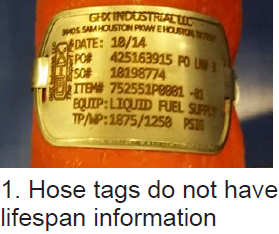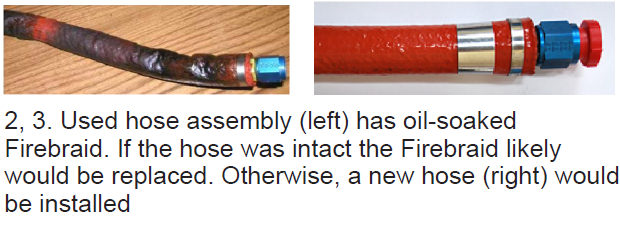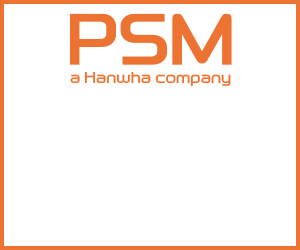Special to CCJ ONSite by Brian Hulse, BDHulse Consulting Services LLC
If we know one thing about hoses, it’s that they’re expensive. So we always try to extract maximum value from them before they’re replaced. The hoses used on most gas turbines are manufactured with no published shelf-life or working-life limitation.
 Each hose on the unit is equipped with a tag at manufacture (Fig 1). It normally shows the maker, date of manufacture, order information, part number, intended service, test pressure, and intended working pressure. No limitation on lifespan (shelf or working) is given; the intent is that there are no set limitations.
Each hose on the unit is equipped with a tag at manufacture (Fig 1). It normally shows the maker, date of manufacture, order information, part number, intended service, test pressure, and intended working pressure. No limitation on lifespan (shelf or working) is given; the intent is that there are no set limitations.
That said, hose manufacturers (Aeroquip, Penflex, Omega Flex, etc), companies that use hose assemblies in their products (engine OEMs), specification organizations (ASME, ISO, SAE, etc), and regulatory bodies (FAA, Australian Civil Aviation Safety Authority, etc) have all written extensively on shelf life, working life, care, and custody of hose and hose assemblies. All of this information is available on the internet, and it makes great resource material.
There are several factors that can limit the life of a hose and, in fact, should be driving you to replacement—such as the following:
-
- Chaffing.
- Kinking.
- Prolonged exposure to UV.
- Mechanical abrasion.
- Lying in fluids (water, mud, fuel, oil).
If you have a GE engine, the OEM provides good information on these issues in the “general practices” foreword of the maintenance chapter in your O&M manuals. Other concerns driving replacement include these:
-
- Working temperature of the fluid carried.
- Cyclic pressure applications versus constant pressure.
- System criticality.
- Personnel exposure opportunity.
- Missing/damaged/illegible hose tags (unable to determine how old the hose is, or that it is working in its intended application).
Some hoses are equipped with an exterior (usually orange) protective sleeve—usually called “Firebraid” after the trademarked product. Firebraid Flame Shield is designed to protect hoses, wires, and cables from the hazards of high heat and occasional flame. The silicone coated glass fiber sleeve protects continuously to 500F and will withstand a molten splash at 2200F. Made of knitted fiberglass yarns in a flexible substrate, it is then coated with a high-grade silicone rubber.
If the Firebraid is torn, chaffed, oil-soaked, or otherwise unable to perform its intended task, the hose should be removed from service (Fig 2). Firebraid and banding systems are available commercially as separate pieces. If the damaged protective sleeve is removed and the hose is found in good condition, the Firebraid can be replaced and the hose returned to service. Alternatively, the hose can just be replaced (Fig 3).

So, as competent plant personnel, what approach should we take to ensure safe, reliable, and economical operation of equipment that uses these hose assemblies?
-
- Find them. Become familiar with where they are in your plant and what service they’re in.
- Catalog them in your maintenance system so that visual inspections can be performed on a routine basis, and that none are missed.
- Develop a uniform visual inspection procedure that makes sense for your operation. Here’s where all that resource information on the internet can come in handy. A lot of the work has been done—there’s no sense reinventing the wheel. Use what’s there to craft your inspection criteria. They have a lot of photographs that illustrate each failure mode, and information to go along with them. Better to use their examples of failures and disasters than to make your own.
Do your inspections and maintenance faithfully and you should not have an issue. Your team should see things being done correctly to gain the confidence needed to perform their jobs properly.
Don’t be afraid to ask questions of your local suppliers if you have them. They may not know the answer off-hand, but almost all of them will have access to an applications engineer at the hose manufacturer, and they will know the answer or have access to it.





